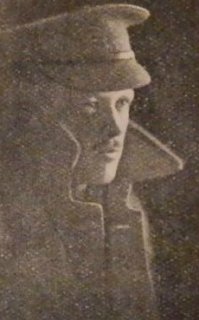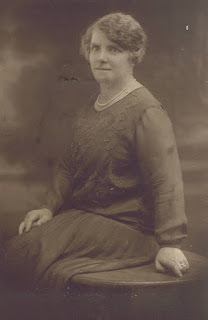A few weeks back a relative of my husband’s wrote looking for a ‘Ford’ cousin in her Cassidy family. Yes, we were them but by default.
Mary might have been disappointed to find my husband wasn’t the Ford she was looking for but she certainly was surprised to find that she had lucked upon some other fairly close relatives.
My husband was from the Cassidys who went off to the Antipodes in the 1920s. In fact, my mother-in-law Winifred was her mother’s cousin and my husband and Mary are second cousins. We quickly exchanged photos and some links to my blog stories. Her grandfather was Joseph, the oldest son of James Cassidy(2) and Elizabeth Corcoran and my husband’s grandfather was his little brother James Edward Cassidy(3).
James Cassidy (2) was born in 1855 near Blayney Castle Ireland where his father and Bridget was staying in army barracks.
 |
| Blarney Castle Barracks Cork, Ireland |
There are a lot of James in this story- each is numbered- here’s a tree
James Cassidy (1) m Judith Ryan
Thomas Cassidy m Bridget Sheridan + Bridget Cassidy ?? m Thomas Sheridan
1818-1887
1823-1880
1822-1895
1826-1861
Catherine 1839-1884
Margaret 1847-1890
James (2) 1855-1906
His father, Thomas had left the army in 1859 and the family settled in Salford, Lancashire where we see James (2) for the first time in the 1861 census with his parents and sister Margaret who had been born in 1847 at another army base in Newcastle upon Tyne.
In 1871 census young James is living with his parents and cousin Margaret Sheridan in Salford and has taken a job as a messenger boy.
Later James (2) met and married Elizabeth Corcoran (1858 – 1938) of Irish born parents, Patrick Corcoran and Margaret Ramsbottom. They and her siblings who had been born in Ireland had moved to Salford around between 1854 and 1858 and she had been born in Salford. James (2) and Elizabeth married in 1880.
James Cassidy (2) m Elizabeth Corcoran
1855-1906 1858-1938
Joseph Cassidy 1881
Mary Cassidy 1884-
Annie Cassidy 1886- 1971
Elizabeth Cassidy 1889-1981
James Edward Cassidy (3)1892-1981
Thomas Cassidy 1896-1896
In 1881 he’s with Elizabeth and working as a fireman on the locomotive service. By 1891 he had progressed to railway engine driver He and Elizabeth have had three daughters Mary 6, Annie 4, and Elizabeth 1. They also have one son Joseph who is nine. James Edward Cassidy (3) the youngest appears in the 1901 census as a five-year-old with his parents and older sisters. James (2) is still driving engines and two of the girls have begun work in the cotton mills.
Meanwhile, Joseph who is working as an engine fireman has married Mary Higginbotham and begun his family. His son Frederick is born in 1903 and Mary Josephine Cassidy is born in 1912. Joseph eventually becomes an engine driver like his father. The 1939 Register shows he lived in 16 Wells Street with his wife children and brother-in-law and like his father is working as a locomotive driver.
 |
| James Edward , Elizabeth, Elizabeth Cassidy nee Corcoran , Mary, Annie Cassidy c 1905 |
James Cassidy (2) died in 1906 aged 51. In 1911 Elizabeth, his widow is living with her daughters and youngest son. An investigation of her comment about having a sixth child who had died reveals a baby Thomas born and died in 1896. Elizabeth lives for another 30 years until 1938 aged 78.
My husband Steve has mostly been interested in his Irish heritage and DNA matches are proving elusive. His DNA ethnicity has his Irish connection suggesting Leinster with Laois and Kilkenny but this could be Corcoran connections too.
Going back one generation there’s James’(2) father Thomas Cassidy from Ireland.
The family story is that Thomas was drunk one night and ended up in the army after taking the King’s Shilling. This is the payment of one Shilling given to recruits for the British Army in the 18th and 19th century. When you take the King’s Shilling you agreed to serve in the Army or Navy. Often when they had to make up the numbers for a ship or a regiment, men were press-ganged into service.
Someone who was intoxicated was a likely candidate for taking the coin. Obviously, the recipient was not always in physical or mental condition to know what happened or was eager to buy his next drink. The practice ended in 1879.
From Thomas’ army records we deduce he was born on 22 February 1818 at St James in Dublin city and Irish / Catholic parish registers show his parents as James Cassidy (1) and Judith Ryan. Thomas’ attestation to the 30th Foot Regiment shows him in Liverpool on 8 May 1837 at age 20 with a service number 1327.
It’s unclear whether he took the Shilling in Ireland or he was living at the time in Salford, Lancashire, England. Based on a likely looking 1841 census and
a marriage document it appears his sister, Bridget married in 1838 in Salford and in 1841 his father, sister and brother-in-law were living in Salford.
It’s highly likely that Thomas had his drunken night in Salford in England and not Ireland.
 |
| Part of Thomas' records |
He served seven years nine months abroad in Bermuda North 1838-1840, America (1842 in Canada) and the Ionian islands off Greece for 3 years (probably Kefallonia south of Corfu which had a British presence at the time. In between times, the 30
th Foot served in Ireland and England. It was pretty much a quiet time due to no action after the peace that Waterloo had brought to Europe.
The 30th Foot took part in the Crimean war in 1853 to 1856. The Regiment landed at Scutari in May 1854 a district and municipality of Istanbul. As part of the Crimean War the Battle of Alma occurred in Sept 1854. The allied expeditionary force made up of French, British, and Turkish forces against the Russian forces defending the Crimean Peninsula culminated on 20/9/1854.
Months later at the Battle of Inkerman the battle broke the will of the Russian Army to defeat the allies in the field on 5/11/1854. This was followed by the Siege of Sevastopol until 1855. The city of Sevastopol was the home of the Tsar’ Black Sea Fleet which threatened the Mediterranean. The Russian Field Army withdrew before the allies could encircle it.
Thomas was quite tall at 5’11” with a Sallow complexion, grey eyes and black hair.
As a career soldier he clocked up a total service of 22 years and 25 days. During his time with the Triple Xs as they were known, he had very reputable service four times awarded a good conduct badge and a silver medal. To top it all off he was given 5 pounds for good conduct and meritorious service in 1859 when he was discharged.
 |
| Discharge section of Thomas' papers |
After a long career in the Army at age 42 1/2, he took up residence in Salford probably with the trade of shoe maker to supplement his army pension. One of the things Mary mentioned was that her uncle Fred had held a diary written by a previous grandfather going back to the Crimean war. Unfortunately, it was disposed of and may well have been Thomas’. Such responsibility- to be custodian of something so old you certainly need to have the story behind the item to realise it’s worth.
Probably due to it being an army wedding, we can’t find Thomas and Bridget’s marriage. She was Bridget Sheridan born circa 1823 in Kildare Ireland. It is likely she knew the Cassidys before Thomas’ “shilling” enlistment and as I’ve mentioned before it seems her brother Thomas Sheridan married Bridget Cassidy who was Thomas’ sister. (Two siblings marrying two siblings will certainly mess up the DNA calculations) I’m guessing that wife Bridget moved around with Thomas or lived in Army accommodation when travel to overseas posts was inappropriate.
So far three children have been found (one during the writing of this blog). Thomas’ first daughter Catherine was born in 1839 in Sunderland. Margaret was born in 1847 and her birth is found only in army births records of Newcastle upon Tyne and not GRO records. James (2) as mentioned before was born at barracks near Blarney Castle in Ireland in 1855.Thomas was likely stationed there until the 30th Foot assembled in Phoenix Park Dublin on 27 May 1859 for the presentation of the new colours by the Countess of Eglinton.
In his discharge on 1 June 1859 Thomas stated that he was going to live in Salford, Lancashire. So, Thomas acquitted himself quite well and was a far cry from his being “volunteered” for the King’s Shilling state. Thomas and Bridget indeed live in Salford as shown in the 1861 census. She has taken up laundry work. In 1871, she is a binder while Thomas is listed as an army pensioner. Interestingly their lodger is a shoemaker. Thomas was likely in business with him.
Bridget died in 1880 and after that Thomas moved in with his daughter, Margaret, her new husband, Patrick Glynn
and grandchildren until he died in 1887.
 |
| 1881 census |
So….. the research for this story turned up some good hints to further research the Irish roots.
So, if indeed it is Thomas’ father, sister and brother-in-law in the 1841 census. Then why indeed were they in England prior to Thomas’ enlistment. The fact that Bridget and Thomas Cassidy (Cassiday, Cassedy, Cafsiday) married people from other Irish parishes pretty much confuses the issue when the belief was that they had immigrated as married couples. Irish people meeting up in Salford somehow simplifies things but doesn’t tell us where they were born.
1841 census with James Cassidy (1) Bridget and Thomas Sheridan - Maybe
There is more to learn about the Cassidy girls (the daughters of James and Elizabeth) the mysterious Roberts Army person who visited the Cassidys in Sydney from USA during WWII and where the Rev Claude Roberts fits in. Mary and I are conferring on her family history. She knows other members of the family who I don’t know and vice versa. There’s even been some developments in the Sheridan family. Finally, the discovery of Catherine Cassidy while researching this piece has broken down a brick wall of the mysterious Bob Roberts -Army person who visited the Cassidys in Sydney from USA during WWII and where the Rev Claude Roberts fits in.
Hint of the Day Sometimes writing a story pays off immensely- Records get checked, tree hints pop up, further searches are undertaken, fresh eyes see the facts again.
Building a timeframe creates a clearer picture, answers some questions and poses some.
Maybe the DNA matches will start to unravel and the brick walls in Ireland will starts to crumble.
As always – if you out there know anything please get in touch
email



































